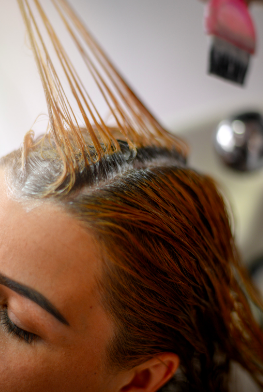Last Updated on November 25, 2022 by mdmtool
Dye and stain are coloring agents that can add color to fabric, hair, or other materials. While they may seem similar at first glance, there are some differences between dyes and stains that you should be aware of before choosing which one to use.
What Is A Dye?

A dye is a coloring agent that bonds with the substrate to which it is applied. The dye must be soluble to bond with the substrate.
What Is A Stain?

A stain is also a coloring agent for wood that changes its appearance. However, it does not need to be soluble to bond with the substrate.
Difference Between Dye And Stain

Significance: Dye is used for coloring fabrics, while stain is used for coloring wood.
Effect: Dyeing gives a uniform color to the fabric, whereas staining gives a mottled or variegated appearance to wood.
Process: The dye needs to be applied in hot water to bond with the fabric fibers. On the other hand, the stain can be applied directly to the wood.
Cost: Dye is generally more expensive than stain.
Toxicity: Dyes are more toxic than stains. Dyes are absorbed by the body through the skin, while stains are not.
Water Resistance: Dyes are not water resistant, while stains are.
Colorfastness: Dyes are generally more colorfast than stains.
Example: An example of a dye is fabric dye, and an example of a stain is a wood stain.
Solubility Of Dye And Stain: Dye is soluble in water, while stain is not. This means that dye can be applied to fabric in hot water, and it will bond with the fibers. On the other hand, the stain cannot be used in water. It has to be applied directly to the wood.
Composition Of Dye And Stain: Dyes are usually organic compounds, while stains are inorganic. Dyes are made from natural or synthetic colors, while stains are made from pigments.
Light-Fast: Dyes are generally more light-fast than stains. This means that dyes are less likely to fade when exposed to light.
Preparation Of Dye And Stain: Dyes are usually prepared by dissolving them in water or another solvent. Stains, however, do not need to be dissolved and can be applied directly to the surface.
Price: Dye is generally more expensive than stain.
Color: Dyes usually have brighter and more vibrant colors than stains.
Purity/Impurity: Dyes are usually purer than stains. Dyes are made from a single color, while pigments are made by mixing different colors.

Advantages And Disadvantages
Advantages Of Dye
- Disposing doesn’t cause pollution.
- Dyes tend to produce brighter and more saturated colors.
- Dyes are usually applied in an aqueous solution, so they require less energy to use than pigments, which are often involved in a paste.
Disadvantages Of Dye
- Not completely safe
- Dye molecules can migrate from the fabric, causing staining and fading over time.
Advantages Of Stain
- Stains can penetrate wood fibers, making them ideal for coloring wood products.
- Stain is easy to apply and can be used with a brush, roller, or sprayer.
- Protect the surfaces from the sun’s harmful rays and moisture.
Disadvantages Of Stain
- Stain can be challenging to remove from surfaces.
- Stain can be messy to work with and can cause staining on clothing and skin.
FAQs
What Are The Types Of Stain?
The two most common types of stain are oil-based and water-based.
What Are Basic Dyes?
Basic dyes are water-soluble and can be used to dye fabrics made from natural fibers such as cotton and wool.
What Are Acid Dyes?
Acid dyes are water-soluble and can be used to dye fabrics made from protein fibers such as silk and wool.
How Do You Make A Stain?
Stains are made by mixing different colors. The exact method will depend on the type of stain you are making.
Conclusion
Dyes and stains are used to color surfaces, but they have some significant differences. The main difference between dyes and stains is that dyes are used to color non-porous materials, while stains are used to color porous materials.
Another difference between these two terms is that “dye” is sometimes used to describe a colored substance used to add color to food or cosmetics, while “stain” is not typically used in this context.
When choosing between a dye and a stain, you must consider the project you are working on and the desired final result.





